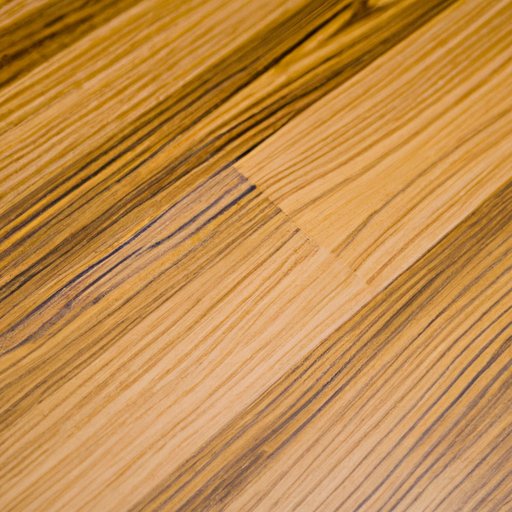
I. Introduction
Vinyl plank flooring is a popular and affordable option for homeowners looking to refresh their floors. It’s durable, easy to install, and available in a variety of styles. In this guide, we’ll walk you through the steps of installing vinyl plank flooring, from preparing your sub-floor to laying the planks.
II. Step-by-Step Guide
Before we get started, gather the necessary materials and tools for the job. You’ll need:
- Vinyl plank flooring
- Utility knife or vinyl cutter
- Measuring tape
- Straight edge or T-square
- Underlayment, if needed
- Adhesive, if using glue-down planks
- Felt or foam spacers
- Tapping block or rubber mallet
- Caulk gun
Now that you have your supplies, let’s break down the installation process:
Preparing the sub-floor
Ensure your sub-floor is clean, dry, and level before installing your underlayment. If you’re installing over concrete, verify that it’s cured and free from moisture. Nail or screw down any loose areas before laying the underlayment.
Measuring and cutting the vinyl planks
Measure the width and length of your room to determine how many planks you’ll need. Plan your layout, ensuring that you have a straight edge to work from. Cut the planks to size, leaving a 1/4 inch gap at each wall to allow for expansion.
Installing the first row
Begin with the longest straight wall in the room and lay the first row of vinyl planks, snapping them together end-to-end. Use a tapping block or rubber mallet to ensure a snug fit. Remember to leave the 1/4 inch gap at each wall.
Continuing with subsequent rows
For the next rows, stagger the planks in a brick pattern and use felt or foam spacers to maintain the 1/4 inch gap. To ensure a tight fit, angle the planks and snap them together. Use a tapping block or rubber mallet to secure them in place.
Trimming and finishing touches
Use a straight edge or T-square to make precise cuts around corners or objects. To secure edges, apply a small amount of adhesive to the groove of the last plank and press it in place. Remove any excess adhesive and caulk around the perimeter of the room.
III. Expert Tips
Here are some tips from professionals in the industry to help with your installation:
- Choose the right type of vinyl planks for the room’s traffic and moisture level.
- Prepare your sub-floor properly to prevent movement or squeaks.
- Acclimate vinyl planks to room temperature and humidity level before installation.
- For tricky areas, like corners or uneven spaces, create a template with cardboard to ensure a good fit.
- Regularly clean and maintain your vinyl plank floors for maximum lifespan.
IV. Safety Tips
During installation, it’s essential to prioritize safety. Here are some tips:
- Use tools as intended and wear safety goggles, gloves, and knee pads.
- Avoid tripping hazards by keeping your work area clear of debris and cords.
- Use proper lifting techniques to handle heavy materials and ask for assistance if necessary.
- Take breaks as needed and stay hydrated.
After installation, allow time for the adhesive to dry and ventilate the room to minimize fumes.
V. Mistakes to Avoid
When installing vinyl plank flooring, avoid these common mistakes:
- Failing to measure the area or plan your layout, resulting in uneven or misaligned planks.
- Skipping the sub-floor preparation or underlayment, leading to movement or squeaks.
- Not leaving enough expansion space near the walls, resulting in buckling or gaps.
- Incorrectly using adhesive or adhesive tools, resulting in glue oozing from the seams.
- Not properly securing or trimming the planks, resulting in gaps or lifted edges.
VI. Cost-Effective Options
While hiring professionals for installation may provide the most seamless result, there are cost-effective alternatives to consider:
- DIY installation can save on labor costs.
- Using alternative budget-friendly options for underlayment or sub-floor preparation, such as plywood or particleboard.
- Finding affordable vinyl plank flooring options from local flooring stores or online retailers.
Remember to prioritize safety and plan accordingly when taking on a home project to make the most of your budget.
VII. Conclusion
Installing vinyl plank flooring is a DIY project that can be accomplished with the right tools and preparation. Prioritizing proper measurement, planning, sub-floor preparation, and safety precautions will lead to a successful installation. With a wide range of styles and affordability, vinyl plank flooring can provide an updated look for your home without overspending.




